
1
0509030848
Treated seed to protect seedlings from diseases. Powdered graphite is used to help the seed flow smoothly through the finger pickup meter which singulates and establishes spacing of the seeds.
| 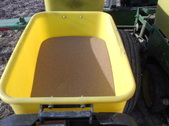
2
0509030848a
Insecticide to protect the plant from various insects that might damage the seed or young new plant.
| 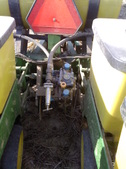
3
0509030848c
Fertilizer system pump that meters nutrients directly onto seed in the trench.
| 
4
0509030850c
Flow meters regulate flow to each row, pressure gauge and floating ball indicators are used to monitor the amount applied and indicate any blockages or flow issues.
|

5
0509031019
Corn placed in the ground on 05/09/13 under no till conditions.
| 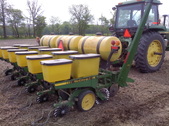
6
0509031019b
Rippled coulters cut residue ahead of the seed opener discs, Dawn Curvetine closing wheels crumble the seed slot closed without compacting. Drag chain levels the seed trench and provides some incorporation of the granular insecticide.
| 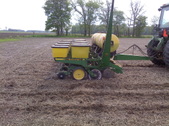
7
0509031020b
Another view
| 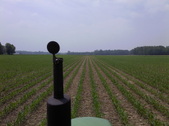
8
0607031224
Even emergence and growth are also key for good yields.
|
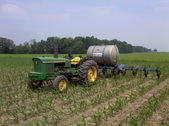
9
0607031224
Applying 28% Nitrogen solution on 06/07/13. This is a key component for a healthy green plant and for creating an optimum environment for high yields. Even at this small stage the corn plant will soon determine the size of the ear it will produce based on the stress it has had, the weather, weed, insect and disease pressure and soil and moisture conditions.
| 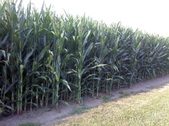
10
0725031845e
07/25/13 Dark green plants indicate they have enough nutrients and are shooting the ears that were being determined back at that small stage. Each kernel has a silk attached. Each silk must be successfully fertilized or there will be a missing kernel on the cob. Heat and insects can interfere with fertilization by damaging the silks which will then hurt kernel development. Also hail stones can bruise kernels in the ear and cause them to abort
| 
11
1015031115
This is the part of the corn head that yanks the stalk to the ground, strips the ear off and feeds it into the combine to be shelled off the cob. 2 rolls spin underneath to grab the stalk and yank it down. This particular one has knife edged rolls which shred and cut the stalk as it pulls it down. This crushes and destroys the stiff stalk breaking and shattering it apart. This helps it break down more quickly and easily and returns nutrients back to the soil for future use. It also leaves a cover on the soil to prevent water and wind erosion.
| 
12
1029031207
10/29/13 Here are the mature and dead plants ready to be harvested.
|
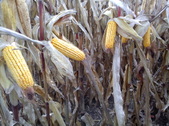
13
1029031159
Here are the mature and dry kernels on the cob ready to be harvested.
| 
14
1029031157a
Combine and corn head work together to separate the kernels from the rest of the plant.
| 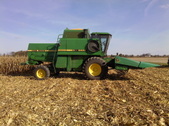
15
1027031507c
The bin full of shelled corn
| |